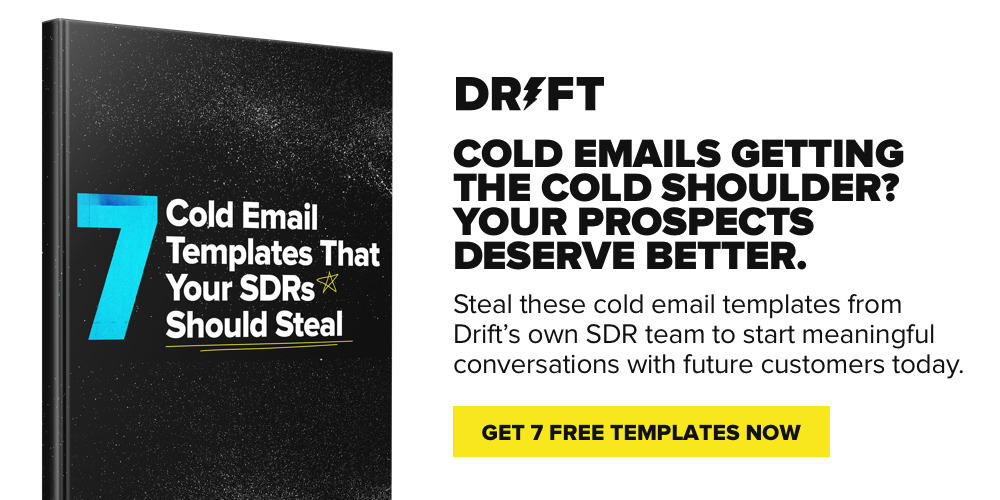
With COVID-19 affecting businesses globally, sales reps today are tasked with moving their pipeline forward while navigating their processes and cadences more delicately than ever. The stress and pressure to succeed and hit quota may seem overwhelming, but you’re not alone. Everyone is facing their own unique challenges and the best way to move forward is with true empathy and understanding for the person on the other end of the phone or email.
This is a tough, scary time. But I know sales reps are innovative, hardworking professionals who can handle the new obstacles. Getting prospects to respond to your cadence or sequence is more challenging than ever. In 2016, it took an average of 13 touches to get a response; today, it can take between 17-22 touches. Combined with the need for BDRs to reach out to accounts with multiple individual buyers, it’s easy to see how prospecting gets tougher as you scale.
But prospects still expect a hyper-personal experience. And it has to scale as your company grows. To do that, your outreach efforts have to make a consistent impact across potentially hundreds of individual buyers simultaneously.
Our company’s prospecting cadences use 22 steps and incorporate social media, email, phone calls, and direct mail. This strategy has helped our BDRs move prospective companies from demonstrating intent to buy to opportunities in just 27 days. Here’s how you can build an impactful cadence that moves your prospects through the pipeline ?
Add value in every single touch
While the number of touches required to generate a response from prospects has increased, so has the need to provide value at each touchpoint. It’s no longer enough to continuously pepper our prospects with phrases like “bubbling this up,” “following up,” “reaching back because,” etc. While persistence is still heavily rewarded, effective prospecting teams must combine persistence with value. That’s what will make all the difference.
So when you’re creating cadences, each touchpoint (phone, email, social, etc.) must make your prospect feel like he or she needs to take time out of his or her busy day to speak with you in order to better perform in their role. If the messages in your cadence lean more towards persistence to get a meeting for the sake of you hitting your quota – rather than helping your prospects do their jobs better – you’re not adding enough value to generate the response you’re after.
Hyper-personalize upfront and then again after engagement
There’s a school of thought regarding whether or not it’s best to send generic touches upfront then wait and see who engages, or if it’s better to personalize upfront regardless of engagement. In today’s prospecting age, people have become so turned off by generic outreach that not only are good first impressions more appreciated, but they’ve also become the expectation. Prospects can immediately spot reps using generic templates, and shows that you haven’t done the research to know and understand a prospect’s business. Leaving that kind of first impression only creates an uphill battle that makes it even more difficult to engage with a prospect.
Instead of initially leveraging generic touches, it’s best to spend the time getting to know your prospects and the best way for their specific company to succeed with your company.
After proving your value, tap into your own analytics to spot who’s most engaged. Things like email opens, clicks, profile views, etc., are a good indicator that you’ve caught someone’s attention. Strike while the iron is hot here with hyper-personalized efforts that will guide the prospect toward a meeting.
Refresh your cadences at least once a quarter
No company can use the exact same sales cadence for each and every territory or account type for an extended period of time. Sure, you might strike gold for a period but the messaging or tactic will need to be revisited on a regular basis to ensure content is relevant to prospects. My suggestion is to compare your company’s success metrics against cadence success rate on a quarterly basis.
Review the subject lines, messaging and what content is most effective is keep securing wins, but also get rid of cadences that fall flat.
Managers specifically should take a look back at how many cadences your team has in rotations, how they are performing, and what particular talking points from hyper-personalized efforts have resulted in meetings.
In doing this, you will be able to analyze what’s working and not then ultimately create new winning cadences, that provide different value adds, so you can constantly attack your territory with different messages
Lack of response doesn’t always mean not interested
Even with the best data informing our strategies, sometimes prospects simply choose not to engage with us at a particular time. As a result, it’s not uncommon for prospects to respond to an email, voicemail or social touch that was sent months ago asking to meet now because the timing is right. When you just haven’t quite been able to lock down particular prospects, there are tangible things that you can do to win their business in the future.
If an account isn’t ready to buy just yet, keep on their radar by adding them to a nurture cadence. This isn’t an excuse to spam them; a nurture cadence is a low-touch point interaction that purely provides value rather than any overly-promotional messaging.
Keep a close eye on your prospect’s intent signals as well as email opens and clicks allows you to determine the best time to revisit the conversation.
Bonus tip: Incorporate social touches
In order to meet the unique needs of our prospects, it’s important to remember that one channel doesn’t necessarily work over others. This is why a true multi-channel consistent effort yields the highest results. Some teams tend to focus solely on email and or the phone. But guess what? They’re neglecting the fact that many of their prospects spend hours each week on Linkedin, Twitter, and other social media outlets. Talk about a missed opportunity.
So whether it’s a “soft touch” such as a profile view, like on an article, comment on a post (not talking about your product) or a more direct touch such as an Inmail, video, voice recording etc, prospecting teams that incorporate multiple social touches throughout their cadences generate more meetings.
As the Director of Sales Development at 6sense, Ernest Owusu leverages his passion for helping others succeed as well as his insights from the field to foster a winning team. With previous experience as an NFL athlete, Ernest thrives in team environments full of high collaboration and healthy competition. Outside of the office, you’ll find him tackling the industry’s diversity problem by mentoring and empowering under-represented people so they can confidently grow their careers.







